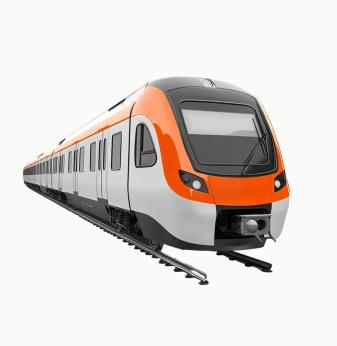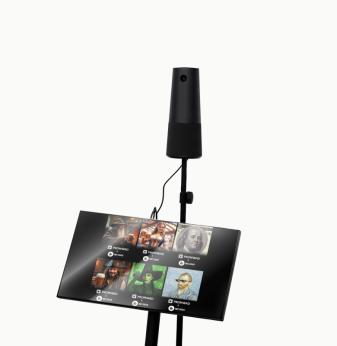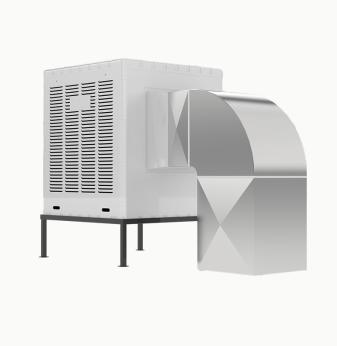How to Choose an AI Sports Tracking Camera: Step by Step Guide from Engineers
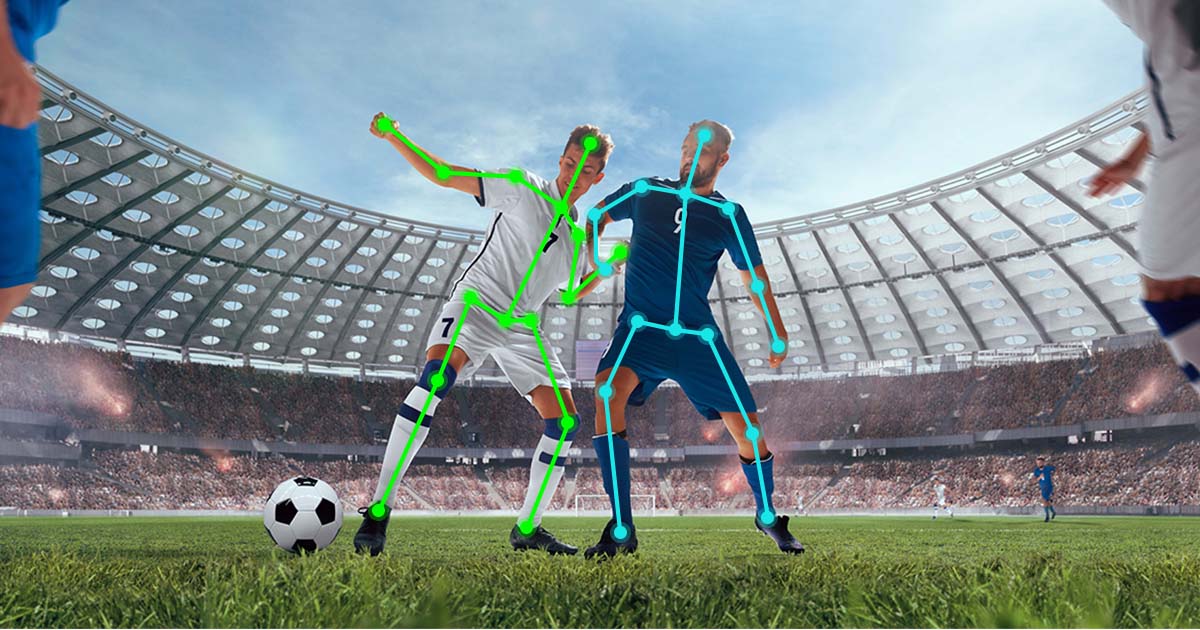


Artificial intelligence in sports is revolutionising the whole industry by transforming how athletes train, coaches strategise, and fans engage with the game. AI is improving analytics and addressing the challenges of traditional methods that require a lot of attention and manual data collection related to errors and subjective decisions.
With new engineering solutions based on AI cameras, sports teams and organisations can benefit from new opportunities to improve play-by-play analytics, enhance the safety and efficiency of training sessions, attract sponsors and advertisers and improve interaction with sports fans – both in the stadium and during the game broadcasting.
AI sports solutions, such as the sports tracking camera, are already making a great impact on the market. For example, in football, AI cameras track the players’ movements, analyse ball flight trajectory, generate heat maps and monitor distance, speed, and acceleration.
A detailed approach with AI in sports analytics gives coaches a tool for improvement in data-driven decisions and team strategies. Similarly, athletes receive real-time feedback to adjust their technique and improve their performance instantly.
Artificial intelligence and sports have been going together for a rather long time now, since huge leagues and championships such as MLB, NBA, NFL, English Premier League and LaLiga enhance their operations and achieve unprecedented levels of insight.
However, the full-fledged and widespread implementation of artificial intelligence cameras in sports is still a long way off: many teams and organisations are still considering launching and optimising their custom AI-powered solutions to meet their needs. That’s why we have prepared this article with the support of sports and engineering experts.
Promwad’s engineering team has extensive experience in designing, customising, and implementing state-of-the-art AI camera platforms for our clients, including vendors of AI-powered tech solutions and sports organisations. These platforms with advanced algorithms and machine learning capabilities are based on powerful computing technologies by Nvidia, Ambarella, NXP, and Qualcomm. They capture and process real-time visual data, providing deep analytics that help improve results and decision-making.
Let’s take a closer look at the mechanisms, convenience and applications of AI cameras in sports to highlight, through real-world examples, how this technology is improving various aspects of sports performance and sports management.
A bonus for those who reach the end – our expert advice on how to choose the right AI platform for your specific needs.
Table of contents
1. Understanding AI Cameras for Sports
2. How AI Cameras Process Images
5. Expert Advice: How to Choose the Right AI Camera Platform
1. Understanding AI Cameras for Sports
What is an AI camera and how does it work?
An AI camera for sports is a sophisticated device that leverages artificial intelligence (AI) and machine learning algorithms to automatically track and record sports games. These cameras are designed to capture the entire game, including key moments, providing high-quality footage and comprehensive data analysis. By using advanced computer vision techniques, AI cameras can follow the movement of players, the ball, and other objects on the field, ensuring that no crucial moment is missed.
The core functionality of AI cameras lies in their ability to automatically adjust focus, zoom, and pan based on the action happening on the field. This dynamic adjustment allows the camera to capture the most important moments of the game with precision. For instance, when a player makes a significant play, the camera can zoom in to highlight the action, providing a more immersive viewing experience.
One of the standout benefits of AI cameras for sports is their capability to deliver professional-grade recordings without the need for a human cameraman. This automation makes them ideal for teams and leagues aiming to offer their fans a more engaging and high-quality viewing experience. Additionally, these cameras can generate highlight reels, making it easier to review and share key moments from the game.
In summary, AI cameras for sports are powerful tools that enhance the recording and analysis of games, capturing every critical moment with high accuracy and providing valuable insights for teams, coaches, and fans alike.
2. How AI Cameras Process Images
AI image processing involves several steps, each designed to enhance the quality and extract meaningful information from the images.
Step 1. Image acquisition and preprocessing
The camera captures images sent for preprocessing to improve their quality by reducing noise, correcting colour, and improving contrast and brightness.
AI algorithms also classify objects at this stage, categorising images into specific classes or groups. This classification is crucial for recognition and scene understanding techniques like super-resolution.
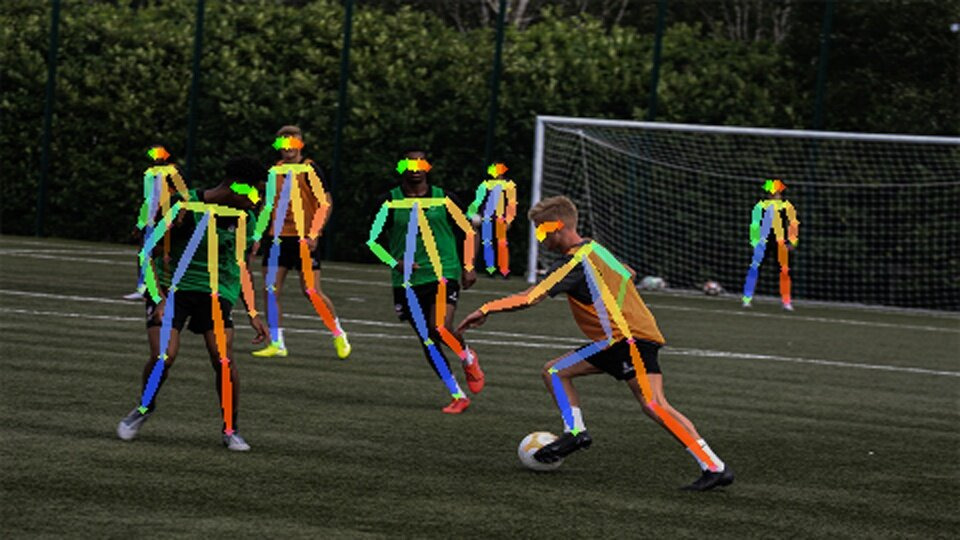
Applied AI algorithms to analyse players' limbs and poses — implemented by computer scientists at Loughborough University, UK. Image is courtesy of Ben Lumley Photography
Step 2. Feature extraction and analysis
AI algorithms analyse the image to detect and extract relevant features with edge detection, shape, and texture analysis. These techniques segment the image into meaningful regions or objects. Pre-trained AI models can detect and recognise specific objects, faces, or elements within these segments.
Step 3. Compression and semantic interpretation
AI-based compression algorithms reduce images' file sizes without compromising their quality, making storage and transmission more efficient.
Step 4. Image generation and style transfer
Thanks to augmented reality tools, AI models are also capable of creating new images, which is an optional but important step in processing a final image for sport. For instance, they can generate photorealistic images based on textual descriptions or transform an image to adopt the style of another (style transfer).
Also, AI models can interpret the semantic meaning and context of images, make image captioning, and answer visual questions. With AI, the image processing workflow becomes more efficient, accurate, and capable of handling complex tasks that were previously challenging or impossible with traditional methods.
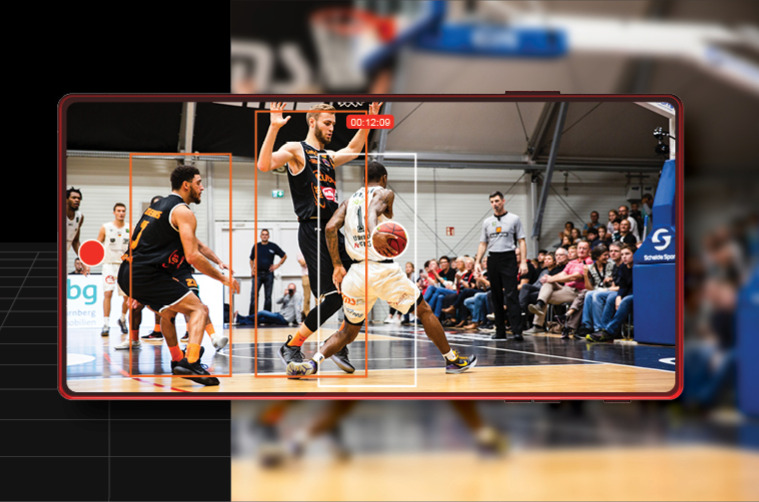
Artificial intelligence in basketball helps track the position of every player on the court, frame by frame. Stat-tracking and video highlights presented by the SportsVisio App
Without AI, analysing game footage and game data to identify players' strengths, weaknesses, and potential areas for improvement was tedious and time-consuming. The leading clubs' coaching staff employed several analysts to review videos manually, often subjectively, identify patterns, and develop plans to improve specific performances.
Hardware and software components within AI camera systems
All the described video capture and interpretation capabilities are made possible by the advanced hardware and software components of AI cameras, which play their role at the appropriate stages:
- Image sensors, such as CMOS, CCD and other high-resolution sensors, capture images and videos by converting light into electrical signals.
- High-end processors, such as the NVIDIA Jetson series, designed for complex AI tasks. These chips perform trillions of operations per second (TOPS) to process high-resolution images and videos in real-time.
- Memory and storage include RAM for temporary memory and storage devices like SSDs or HDDs for long-term archiving of large amounts of visual data inside AI cameras.
The camera captures images sent for preprocessing to improve their quality by reducing noise, correcting colour, and improving contrast and brightness. The camera footage is then processed to deliver advanced physical and contextual data without the need for additional hardware.
For 20 years, Promwad’s engineering team has successfully implemented all these components in hardware and FPGA design projects commissioned by our clients worldwide. Below is one of the case studies in AI-powered video processing:
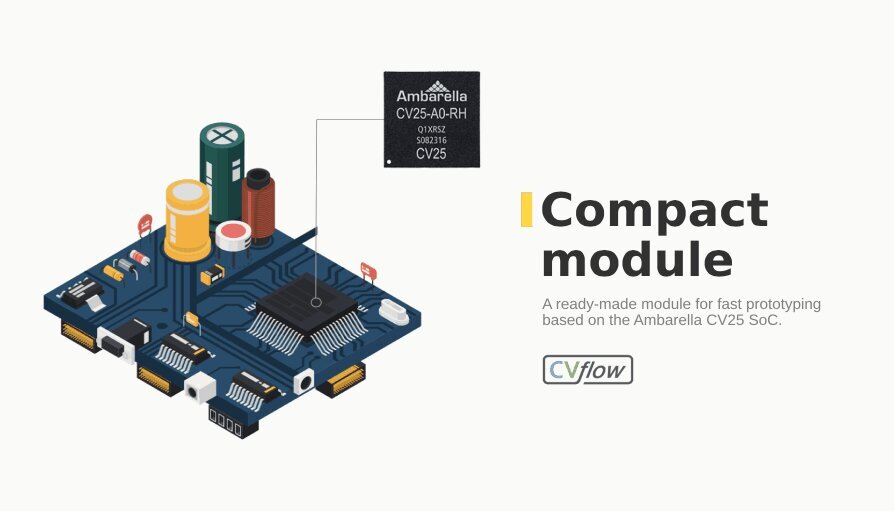
A ready-made module by Promwad for fast prototyping of AI-based video tracking solutions powered by the Ambarella CV25 SoC
Software in AI cameras
- Deep learning algorithms such as сonvolutional neural networks (CNNs) to analyse visual data, recognise patterns and make predictions.
- Object detection and recognition algorithms, such as YOLO (you only look once) or SSD (single-shot detector), to identify objects by their shape, colour, and texture.
- Image segmentation algorithms with edge detection, thresholding, or clustering to identify specific objects or features within the image.
- Activity recognition algorithms to detect certain actions within videos, such as running or jumping. It is possible by analysing the sequence of frames and their temporal dynamics.
- Facial recognition algorithms to analyse facial features like shape, size, and orientation. It helps identify specific players or other participants in sporting events.
3. Key Features to Consider
Automated Production and Tracking
When selecting an AI camera for sports, automated production and tracking are two essential features to prioritize. Automated production enables the camera to independently record and edit the game, producing a high-quality video that can be shared with fans and used for in-depth analysis. This feature ensures that the entire game is captured seamlessly, from start to finish, without any manual intervention.
Tracking is another crucial feature, allowing the camera to follow the movement of players and the ball throughout the game. Advanced AI and machine learning algorithms are employed to provide accurate and reliable tracking, ensuring that key moments are captured in real-time. This capability not only enhances the viewing experience but also provides valuable data for performance analysis.
When evaluating cameras for automated production and tracking, consider those that offer high-resolution footage, such as 4K resolution, and high frame rates. These specifications ensure that the captured footage is clear and detailed, making it easier to analyze and enjoy.
Portable and Easy to Set Up
Portability and ease of setup are also important factors to consider when choosing an AI camera for sports. Look for cameras that are lightweight and compact, making them easy to transport and set up at various venues. This flexibility is particularly beneficial for teams that play in different locations and need a reliable camera that can be quickly deployed.
Additionally, consider the camera’s power requirements and battery life. A camera with a long battery life can operate for extended periods without needing frequent recharges, ensuring uninterrupted recording of the entire game. User-friendly interfaces and controls are also essential, as they make it easier to set up and operate the camera, even for individuals with limited technical expertise.
By selecting an AI camera that is portable, easy to set up, and equipped with advanced features like automated production and tracking, teams and leagues can provide their fans with a more immersive and engaging viewing experience. Moreover, these cameras offer valuable insights and analysis that can help improve team performance and strategy.
In conclusion, when choosing an AI camera for sports, prioritize features such as automated production, tracking, portability, and ease of setup. These features will ensure that you capture high-quality footage of the game, provide an engaging experience for fans, and gain valuable insights to enhance your team’s performance.
3. How does AI Impact Sports
The significance of real-time image processing and AI in the sports industry lies in its ability to provide immediate feedback and insights that can be acted upon. By analysing video footage in real-time, coaches and athletes can adjust their techniques, strategies, and training regimens.
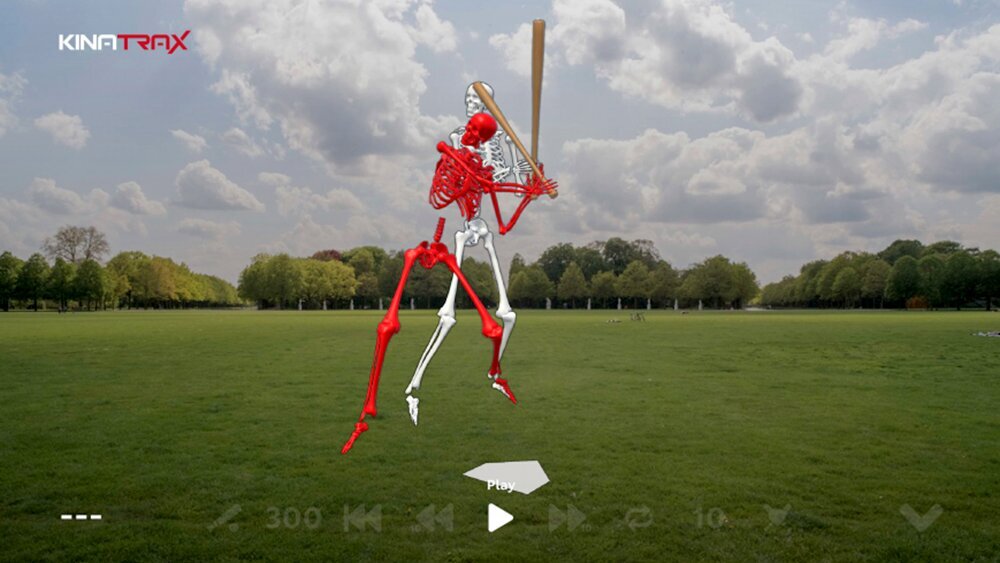
A screenshot of the KinaTrax system, which provides markerless motion capture technology for sports. Image credit: KinaTrax, Inc
Real-time image processing enabled in sports helps with the following actions:
- Event detection algorithms to classify goals, touchdowns, or fouls in real-time.
- Motion tracking records movements to analyse athletes’ performance in detail and identify areas for improvement.
- Injury prevention to fix potential risk factors for injuries and provide early warning signs for coaches and medical staff.
- Automated refereeing to assist referees in making accurate and consistent decisions, reducing human error and ensuring fair play.
- Fan engagement by enhancing the viewing experience for fans with instant replays, statistics, and interactive features.
Tracking is another crucial feature, allowing the camera to follow the movement of players and the ball throughout the game. Auto tracking technology enhances this by automating the filming and streaming process, providing high-quality video footage for player development and training analysis, and improving fan engagement.
AI cameras provide immediate insights and alerts through edge AI, which runs AI tasks directly on the camera without cloud-based processing.
AI-driven analytics
AI-driven analytics is important in enhancing performance and strategy in both team and individual sports with insights that influence training, game planning, and overall success.
AI in sports training, combined with sports tracking, helps to provide detailed insights into team dynamics, enabling coaches to develop more effective strategies. For example, understanding the optimal positioning and movement patterns can improve defensive setups and attacking plays.
Athletes also receive personalised feedback based on detailed data analysis. This helps them refine their techniques, improve their strengths, and address weaknesses. AI can also monitor fatigue levels and suggest optimal training loads to prevent overtraining and injuries.
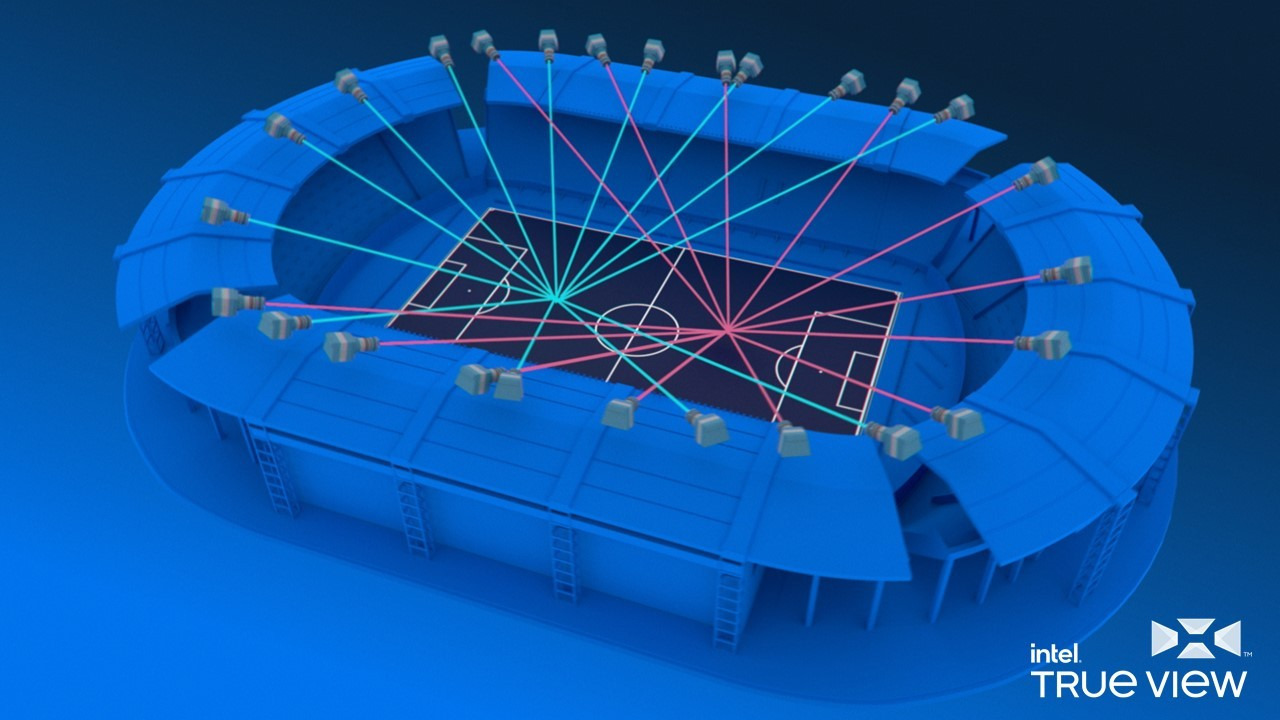
Manchester City has Matrix-style 360-degree view with 38 x 5K volumetric cameras with Intel’s True View system. Image credit: Intel Corporation
Artificial intelligence in sports provides real-time insights during games, allowing coaches to make tactical adjustments on the fly. This immediate feedback loop can be crucial in tightly contested matches, where small adjustments can make a significant difference.
Here are just a few examples of these transformational changes in the most popular sports:
Football: Clubs like FC Barcelona and Manchester City use AI to analyse player performance and tactical efficiency. AI systems track player positions, passing patterns, and team dynamics, helping coaches make data-driven decisions.
For example, referees at the UEFA Euro 2024 football tournament tracked the ball and players with the latest video assisted referee (VAR) technology powered by AI.
Basketball: AI in NBA helps to track player movements and shot trajectories with analytics. The Second Spectrum system provides insights into player spacing, shot selection, and defensive strategies, enhancing both in-game decision-making and post-game analysis.
Athletics: AI analyses the running mechanics of sprinters and marathon runners. By capturing detailed motion data, AI helps athletes optimise their form, reduce injury risks, and improve overall performance.
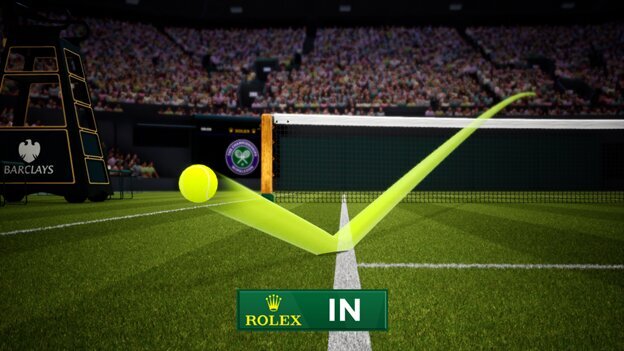
A printscreen of the Hawk-Eye analytics system used at the Wimbledon tennis tournament in July 2024. Image credit: Hawk-Eye Innovations, a part of Sony Group
Tennis: AI systems track ball trajectories, player movements, and shot patterns. AI systems track ball trajectories, player movements, and shot patterns. This data helps players and coaches develop strategies against specific opponents and refine their techniques for better performance.
Marketing sports events
AI cameras have changed the way sports events are marketed. High-quality footage and real-time data analysis enable sports marketers to create engaging content that attracts and retains fans.
AI in the sports industry analyses fan behaviour and preferences, allowing marketers to tailor their campaigns to individual interests. For instance, marketers can create targeted ads and promotional materials that resonate more deeply with their audience by understanding which players or moments fans are most excited about.
AI-driven cameras can automatically generate real-time highlights during games, which can be instantly shared on social media platforms. This keeps fans engaged and helps reach a broader audience. AI cameras can also provide multiple angles and perspectives, enhancing the viewing experience.
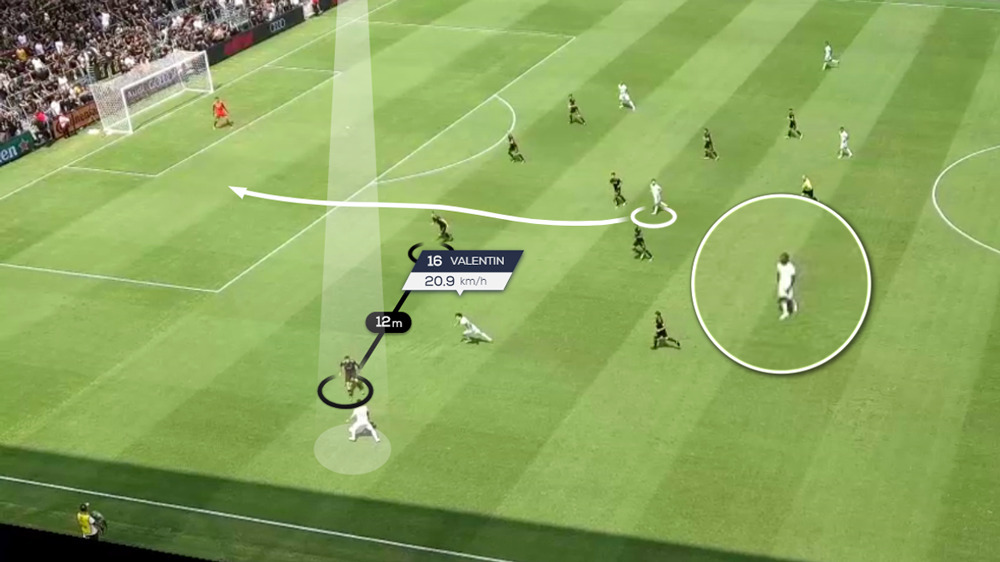
The Metrica Sports app identifies formations and tactics and pulls data from any camera, including a smartphone. Image credit: Metrica Sports B.V.
One example from NBC TV Network in the US: they provide their 7 million subscribers with personalised audio and video reviews of the Paris 2024 Olympics — all AI-generated according to their specific requests. About 7 million unique reviews daily!
The fan experience is a crucial aspect of sports, and AI technology has significantly enhanced it by making it easier for fans to watch live events and revisit past moments. AI in football or other playing sports can provide real-time statistics and insights during live broadcasts. Fans can access detailed information about player performance, game strategies, and predictive analytics. This deeper level of engagement keeps fans informed and connected to the game.
Training sessions
AI image processing is a real game-changer in sports training with personalised feedback and tailored training programs for athletes.
- AI cameras capture detailed data on an athlete's performance, including biomechanics, speed, and efficiency. This data is analysed to identify strengths and weaknesses, allowing coaches to develop customised training programs that address specific needs.
- AI systems can track an athlete's progress over time and provide insights into improvements and areas that need further development. This ongoing analysis ensures that training programs are continuously optimised for the best results.
AI-powered virtual coaching systems provide real-time feedback and instructions during training sessions. These systems can simulate various scenarios and offer guidance based on the athlete's performance, making training more efficient.
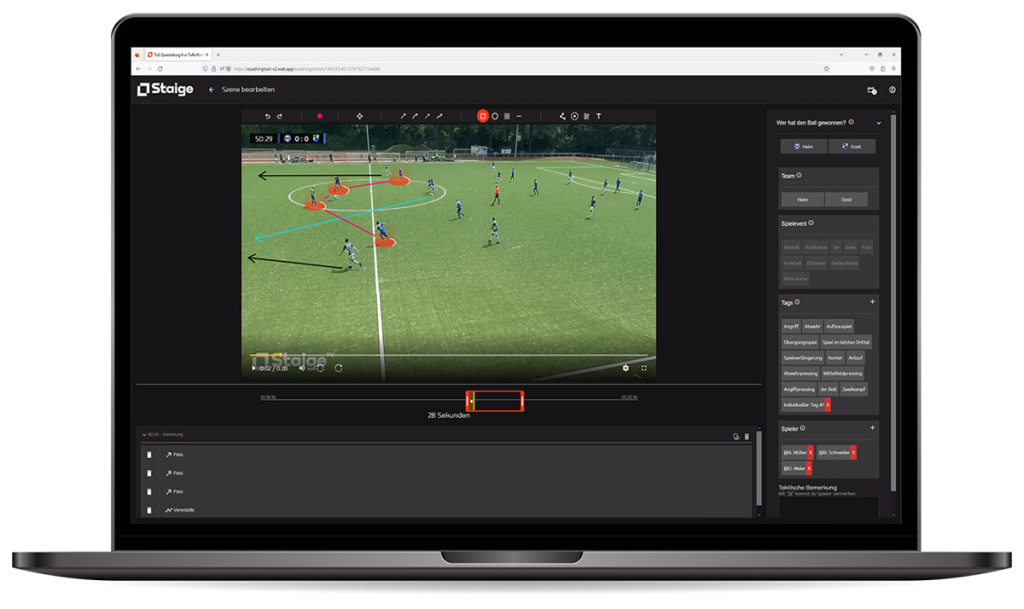
The Staige system consists of six interconnected lenses in a compact camera to capture the main action for its users. Source: staige.tv
Combined with AR, AI technology for sports creates immersive training environments. For example, AR glasses can display real-time data and visual cues directly in the athlete's field of vision, helping them adjust their technique on the fly. This real-time interaction enhances learning and skill acquisition.
Perspectives of AI in sports analytics
The future of AI in sports analytics is auspicious. AI systems will become even more sophisticated as technology advances, providing deeper insights and more accurate predictions. We can expect:
- Integration with wearables will provide even more granular data on athlete performance, health, and recovery.
- Enhanced fan engagement that includes immersive fan experience, real-time statistics, personalised content, and interactive features during live events.
- Predictive analytics: potential injuries, performance peaks, and even match results. This predictive power of AI in sports training will serve coaches, athletes, and even sports bettors.
- AI coaching assistants: virtual coaching assistants powered by AI could become commonplace, providing real-time advice and feedback based on data analysis, helping athletes improve continuously.
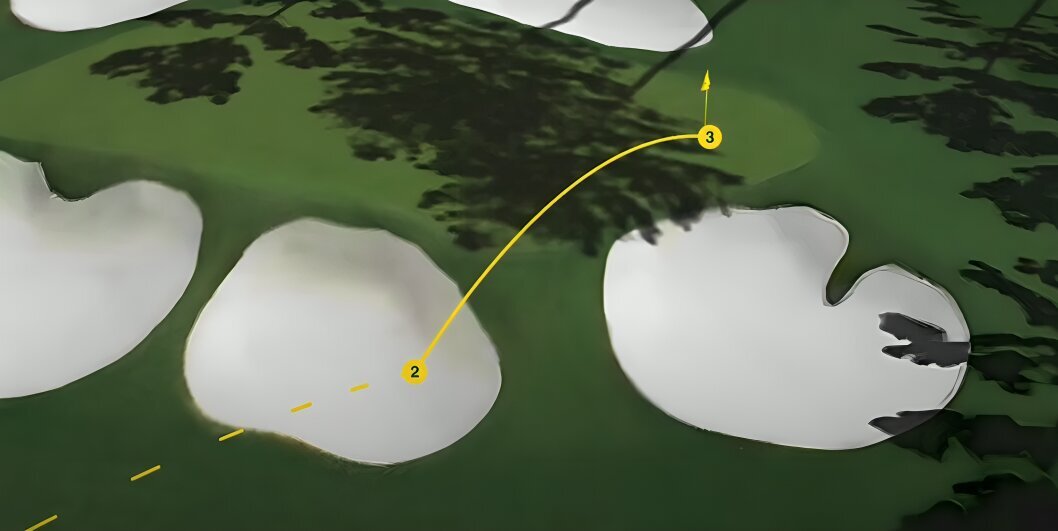
IBM and the Masters use hybrid cloud and AI technology to provide fans with a better experience. Source: a still image from the video by IBM Corporation
AI-powered applications can offer interactive features such as virtual replays, heat maps of player movements, and augmented reality overlays. These features allow fans the possibility to explore different aspects of the game in detail.
4. How does AI Impact Sports
Promwad designs and integrates AI-based hardware and software systems that can analyse data to monitor sports performance in real time, perform predictive modelling to optimise training regimes, and much more. AI integration allows sports organisations and providers of tech products to gain deeper insights, improve athlete performance, and create better fan experiences.

Commercial Director at Promwad GmbH Alex Worobjow, a semi-professional footballer and children's coach, with Michael Roosen, a head of the youth unit at Walbeck, Germany
AI on Edge
With AI on edge technology, the Promwad engineers can implement real-time analysis and output information to devices like cameras and wearable gadgets without resorting to cloud computing. This opens up vast opportunities for smart sports applications to process video, track player movements and provide instant feedback.
One of the key components that allows AI to be used at the edge in sports is computer vision models, such as human pose estimation. These can accurately perceive 3D human movements using only camera data without requiring specialised sensors or wearable devices. Coaches can use them to automatically analyse a player's technique, identify strengths and weaknesses, and provide feedback to improve performance.
Another important aspect is the use of peripheral devices such as smart cameras to track players' movements and interactions during games. Cameras located all over the pitch allow for advanced sports analytics without the need for equipment. By processing data on the spot, these artificial intelligence systems can provide information instantly, without the delays associated with sending data to the cloud.
Wearable devices
Wearable devices for sports provide coaches and athletes with information on physical performance and health indicators. They have already changed how we approach training, injury prevention and competition strategy.
At the heart of wearable sports technology are sensors embedded in smartwatches, fitness trackers and specialised clothing. These sensors collect a wide range of data, from heart rate and body temperature to movement patterns and exertion. The data is then transmitted wirelessly to apps or cloud-based software platforms where it is analysed.
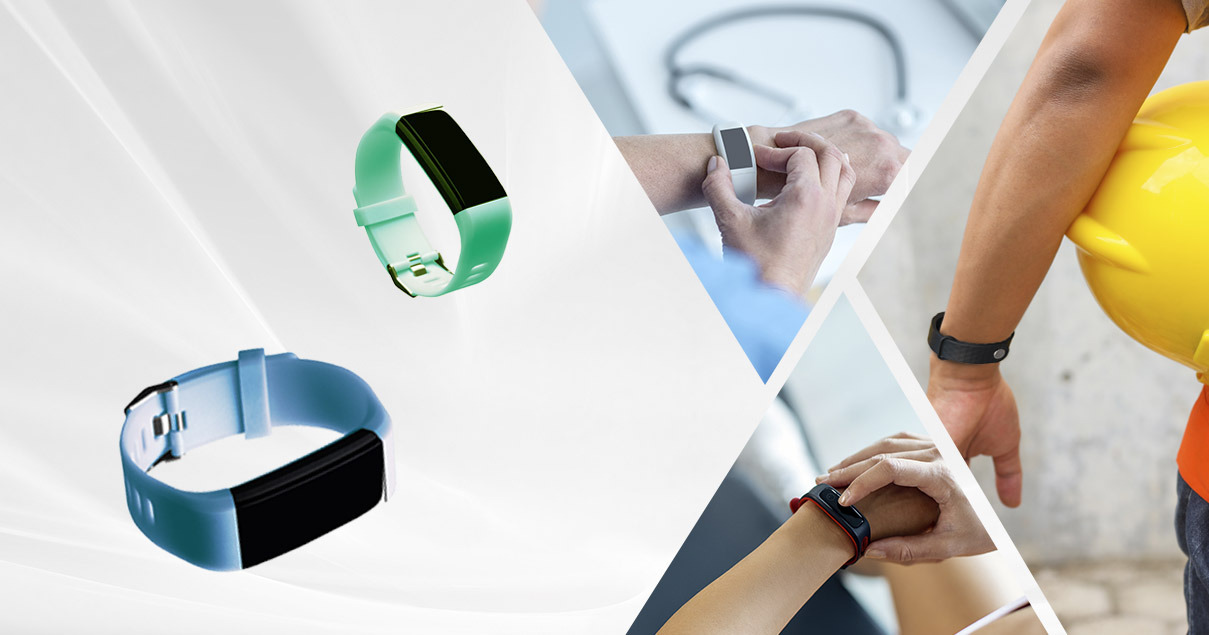
Wearable devices provide real-time security monitoring, fast and easy communication, track health and location data which is crucial for sport
Information about physiological state and movement mechanics can optimise training loads, identify fatigue or injury risk factors, and make data-driven decisions about player substitution and game strategy. Most importantly, wearable devices have proven invaluable in injury prevention, allowing medical staff to closely monitor an athlete's recovery and ensure their safe return to play.
At Promwad, we design such trackers for our clients from scratch, including mobile app development, or help them enter the market with a branded product based on a ready-made white-label solution
AI-based football game
Promwad presented a demo of a gesture-controlled football game at IBC 2024. Visitors could test an AI-based game to experience the possibilities of gesture control.
Players were shown penalty scenarios where they chose a segment of the gate where the ball would hit, and then AI calculated how close their prediction was and provided a commentary on the result.
Our engineers used fragments of real broadcasts to demonstrate the potential of AI to customise content based on user gestures dynamically.
Broadcasting equipment
The world of sports broadcasting has changed due to technological advancements and the demand for high-quality viewing. The great merit of this progress goes to complicated broadcast equipment.
Our broadcasting solutions include high-definition PTZ cameras that dynamically track action, zooming in on key moments. We collect feeds from multiple cameras and monitor their movements, which provides comprehensive coverage. Wireless microphones worn by players, coaches, and officials pick up sound, helping to enhance the spectator experience.
The Promwad software engineers have explored software development kits (SDK) from leading video camera manufacturers, who supplied equipment for international sporting events and Oscar-nominated films in 2024. As a result, our clients can create universal cross-platform software to manage virtually any professional camera in real time — via web browsers, smartphones, or tablets.
We also use on-premise software and cloud technology for real-time graphics that combine player statistics and team information. Instant replay features provide multiple camera angles and slow-motion replay. In addition, we offer FPGA-based design for custom high-performance broadcast solutions.
Advanced AI analysis
Promwad's portfolio includes many examples of implementing AI algorithms to perform tasks for various industries, from simple people counting to identifying more complex behaviours
AI analysis of video content, using advanced algorithms to process and analyse video footage in real-time, provides coaches and game analysts with information about the game, strategy, and overall dynamics.
Another important benefit of analysing video content with artificial intelligence is its ability to increase fan engagement. Using artificial intelligence models, sports broadcasters can personalise content for each viewer according to their preferences and provide them with a platform for interaction.
Thanks to our experience in implementing cross-platform solutions, software engineers and UX designers at Promwad can deliver personalised content for sports fans to any platform — from wearable devices and smartphones to smart TVs applications and professional broadcasting platforms.
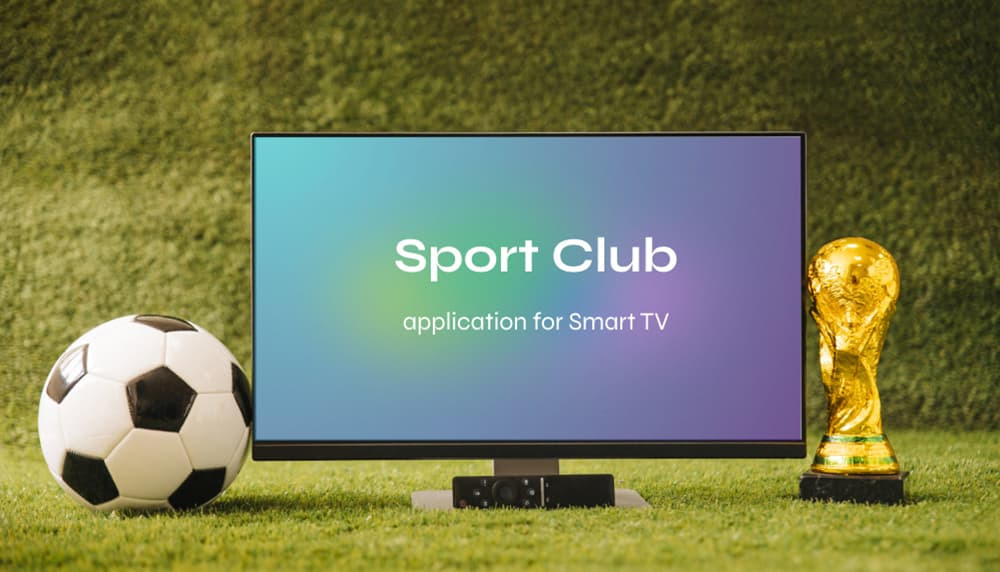
Sport Club, an application for Smart TV with live streaming and VoD. Developed at Promwad for a European football club
5. Expert Advice: How to Choose the Right AI Camera Platform
Promwad specialists have extensive experience with various AI camera platforms designed to meet the needs of different sports applications. Our offerings include AI cameras on Nvidia, Ambarella, NXP, and Qualcomm chips.
In the table below, we cover the features and application options of each vendor's platforms to give you some quick insights:
When working on projects, we evaluate all available information about our client's requirements to find the best solution at the intersection of business and technology parameters. Our engineering experts would recommend considering the following factors when deciding on your future AI sports camera:
Performance and latency
- Real-time applications demand low-latency solutions for immediate feedback.
- High-performance processing capabilities are essential for accurate and fast data analysis.
Image quality
- High-resolution imaging is critical for detailed analysis and enhanced viewing experiences.
- Cameras should perform well under various lighting conditions.
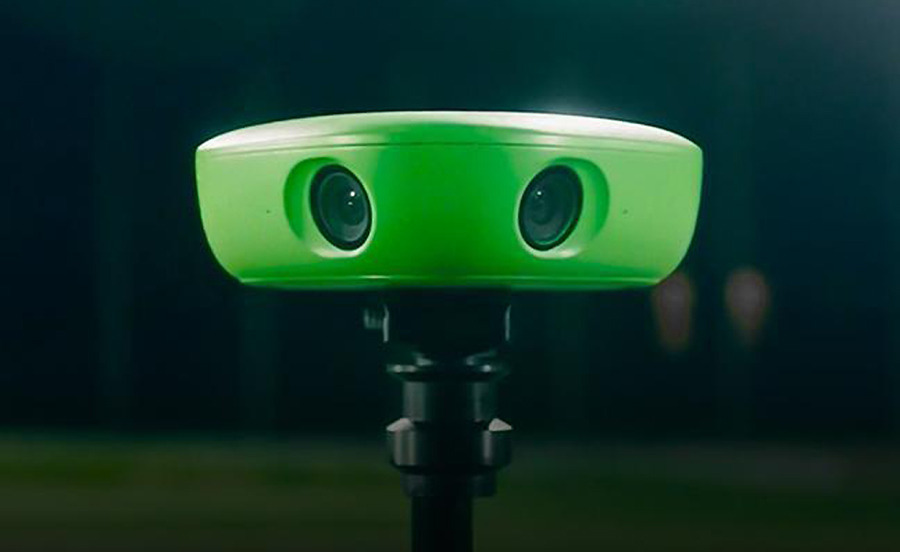
Veo, the world's first portable AI sports camera with live streaming. With a weight of 1.25 kilograms users can take it anywhere and quickly move from field to field. Image credit: Veo Technologies ApS
Scalability and flexibility
- The ability to scale solutions from small-scale applications to large stadium environments.
- Flexibility to customise and adapt to specific sports requirements.
Security
- Robust security features to protect sensitive data and ensure integrity.
- Compliance with industry standards and regulations.
Power efficiency
- Energy-efficient solutions are important for prolonged use and sustainability. Especially relevant for outdoor and battery-powered applications.
Connectivity
- Advanced connectivity options for seamless data transfer and remote monitoring.
- Integration with existing infrastructure and systems.
Recommendations based on your specific requirements
We provide expert advice in choosing the best platform for your AI camera based on your specific requirements. Whether you need advanced image processing, real-time data analytics, or simple integration with existing systems, we can help you find the perfect platform that meets your goals and exceeds your expectations.
For real-time game analysis and training optimisation
- Recommended platform: Nvidia.
- Reason: High performance and low latency make these cameras ideal for real-time applications where immediate feedback is crucial.
For performance monitoring and fan engagement
- Recommended platform: Ambarella.
- Reason: Superior image quality and efficient data handling enhance the viewing experience and provide detailed performance insights.
For smart stadiums and continuous training analysis
- Recommended platform: NXP Semiconductor.
- Reason: Robust security, power efficiency, and scalability make these cameras suitable for large-scale applications and continuous monitoring.
For player tracking and broadcast enhancements
- Recommended platform: Qualcomm.
- Reason: High processing power and advanced connectivity facilitate accurate tracking and real-time data analysis, enhancing coaching and broadcasting.
* * *
Artificial intelligence image processing is a huge shift in the sports industry, enhancing performance analysis, decision-making and injury prevention. By collecting and analysing real-time data, AI cameras for sports provide unprecedented insight into player movements, strategies and overall game dynamics.
Promwad offers development services for AI sports cameras based on Nvidia, Ambarella, NXP and Qualcomm technologies. Each platform is designed to meet the specific needs of the sports industry, from real-time tracking and analytics to advanced gesture recognition and integration with existing systems.
Enter the future of sports analytics with your tech hardware and software solutions powered with artificial intelligence! Write to us at info@promwad.com for more information on how our AI cameras can transform your business and enjoyment of the game!

